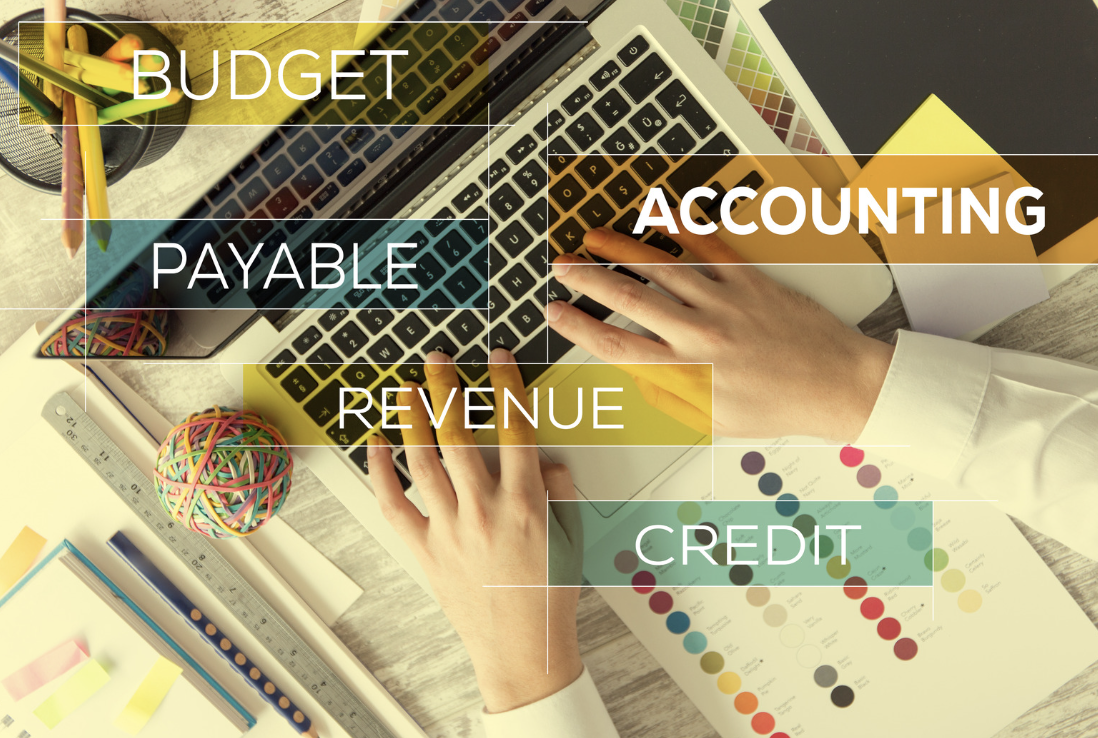5 Budgeting Tips for Controllers: Navigating Fiscal Responsibility
5 Tips on Budgeting as Controllers: Navigating Fiscal Responsibility

As a financial controller, one of your key responsibilities is to maintain the fiscal health of your organization. A critical aspect of this role is budgeting, which involves forecasting, planning, and tracking expenses. By implementing effective budgeting strategies, you can ensure that your organization operates efficiently and stays on track financially. In this article, we will explore five essential budgeting tips for controllers to navigate the world of fiscal responsibility.
Forecasting to Maximize Fiscal Responsibility
When it comes to budgeting, accurate forecasting is crucial. By analyzing historical data and market trends, you can make informed predictions about future expenses and revenue. This allows you to effectively plan and allocate resources, ensuring fiscal responsibility. One important aspect to consider when forecasting is seasonality. Understanding how your expenses and revenue fluctuate throughout the year can help you make more accurate predictions. For example, if you run a retail business, you may notice higher sales during the holiday season. By taking this into account, you can adjust your budget and allocate resources accordingly.
Another factor to consider is industry changes. Industries are constantly evolving, and staying up to date with the latest trends can give you a competitive edge. By analyzing industry data and market research, you can identify potential changes that may impact your budget. For instance, if you are in the technology sector, you may need to allocate more resources towards research and development to stay ahead of the competition.
Economic trends also play a significant role in forecasting. By monitoring economic indicators such as inflation rates, interest rates, and consumer spending habits, you can anticipate how these factors will affect your budget. For example, if the economy is experiencing a downturn, you may need to adjust your revenue projections and find ways to cut costs.
In addition to analyzing data and trends, it is important to regularly review and update your forecasts. This allows you to adapt to any unexpected changes and make necessary adjustments. By staying in touch with your team members and stakeholders, you can gather valuable insights that can inform your forecasting decisions. Their expertise and perspectives can help you identify potential risks and opportunities that may impact your budget.
Forecasting is not a one-time process but an ongoing practice. By continuously monitoring and revising your forecasts, you can ensure that your budget remains aligned with your goals and objectives. This proactive approach enables you to identify potential budget constraints early on and take appropriate actions to mitigate any risks. Accurate forecasting is essential for maximizing fiscal responsibility. By analyzing historical data, considering seasonality, industry changes, and economic trends, and regularly reviewing and updating your forecasts, you can make informed budgeting decisions. This allows you to allocate resources wisely, adapt to changes, and identify potential budget constraints early on. By practicing effective forecasting, you can ensure that your organization remains financially responsible and well-prepared for the future.
Understanding the Role of Accounting Software
In today’s digital age, using accounting software is essential for efficient budget management. These tools help you streamline financial processes, automate calculations, and generate accurate reports. With the right software, you can track expenses, monitor cash flow, and generate financial statements effortlessly. Moreover, accounting software offers features like budgeting templates, real-time data updates, and forecasting capabilities. By leveraging these tools, you can simplify your budgeting tasks and make more informed decisions based on accurate and up-to-date financial information.
One of the key advantages of using accounting software is its ability to automate repetitive tasks. For example, instead of manually inputting each transaction, the software can automatically import data from bank statements or other financial sources. This not only saves time but also reduces the chances of human error. Furthermore, accounting software provides a comprehensive view of your financial health. It allows you to generate detailed reports that provide insights into your income, expenses, and overall financial performance. These reports can help you identify areas where you can cut costs, increase revenue, or optimize your budget allocation.
Another significant benefit of accounting software is its ability to facilitate collaboration among team members. With cloud-based software, multiple users can access and update financial data simultaneously, regardless of their physical location. This promotes seamless collaboration, improves communication, and ensures that everyone is working with the most up-to-date information.
Moreover, accounting software often comes with built-in security features to protect your financial data. These may include encryption, user access controls, and regular data backups. By using such software, you can safeguard your sensitive financial information and reduce the risk of data breaches or loss.
Furthermore, accounting software can integrate with other business tools, such as customer relationship management (CRM) systems or project management software. This integration allows for seamless data transfer between different departments, minimizing manual data entry and improving overall efficiency.
In conclusion, accounting software plays a crucial role in today’s business environment. It helps streamline financial processes, automate calculations, and generate accurate reports. By leveraging its features, you can simplify budgeting tasks, make more informed decisions, and ensure the security of your financial data. With the continuous advancement of technology, accounting software is only expected to become more powerful and indispensable in the future.

Planning for Unforeseen Expenses
No matter how meticulously you plan your budget, unforeseen expenses can still arise. It’s essential to prepare for such situations and have a contingency plan in place. Create a separate budget category for unexpected costs, ensuring that you set aside funds to handle any unforeseen circumstances.
One example of an unforeseen expense is a sudden medical emergency. Imagine you’re going about your day, and suddenly you or a loved one falls ill or gets injured. In this situation, having a contingency plan can make all the difference. By setting aside a portion of your budget for medical emergencies, you can ensure that you have the necessary funds to cover unexpected medical expenses, such as hospital bills, medication, or doctor’s visits.
Another unforeseen expense that can catch you off guard is a car breakdown. Picture yourself driving to work or heading out on a road trip, and suddenly your car starts making strange noises or won’t start at all. Dealing with car repairs can be costly, especially if you need to replace major components. By having an emergency fund specifically designated for car repairs, you can ease the financial burden that comes with unexpected vehicle breakdowns.
Consider establishing an emergency fund to cover unexpected expenses that may arise due to equipment breakdowns, legal liabilities, or economic downturns. By allocating a portion of your budget to this fund, you can mitigate the financial impact of unforeseen events.
Legal liabilities can also be a significant source of unforeseen expenses. Imagine finding yourself in a situation where you need legal representation or have to pay fines or penalties. Whether it’s a personal matter or a business-related issue, having a contingency plan for legal expenses can provide peace of mind and financial stability in challenging times.
Moreover, economic downturns can have a significant impact on your financial stability. During times of recession or economic instability, job losses and reduced income can become a reality for many individuals and families. By planning ahead and setting aside funds in an emergency fund, you can better navigate these uncertain times and ensure that you have a financial buffer to rely on.
Techniques for Reducing Operating Costs
Controlling operating costs is a significant challenge for many organizations. To stay financially healthy, it’s crucial to identify and implement cost-saving strategies. Start by analyzing your expenses and identifying areas where you can cut costs without sacrificing quality. Consider renegotiating contracts with suppliers to obtain better pricing or exploring alternative vendors. Additionally, implement energy-saving measures to reduce utility bills and encourage employees to adopt sustainable practices. Encourage employees across all departments to be mindful of expenses and provide them with training on cost management. By fostering a culture of cost-consciousness, you can make a significant impact on your organization’s financial health.

Utilizing Financial Ratios to Track Spending
Financial ratios are powerful tools for assessing your organization’s financial health and tracking spending. Ratios provide insights into liquidity, profitability, and overall financial stability. By regularly calculating and analyzing financial ratios, you can identify areas of concern and take immediate action to address them. For example, closely monitor the current ratio, which measures your organization’s ability to pay its short-term obligations. A declining current ratio could indicate potential liquidity issues and warrant further investigation. Additionally, track profitability ratios such as gross profit margin and net profit margin to assess your organization’s profitability and identify potential inefficiencies.
Evaluating Cost-Cutting Strategies
As a financial controller, part of your responsibility is to evaluate the effectiveness of cost-cutting strategies. Continuously review and assess the impact of your cost-cutting initiatives to ensure they are achieving the desired outcomes. Regularly communicate with department heads and team members to gather feedback and identify areas for improvement. Remember that cost-cutting should not jeopardize the quality or efficiency of your organization’s operations. It’s important to strike a balance between reducing expenses and maintaining productivity. Continuously monitor the results of cost-cutting strategies and refine them as necessary to achieve optimal fiscal responsibility.
CONCLUSION
As a controller, mastering the art of budgeting is essential for navigating the complexities of fiscal responsibility. By implementing these five budgeting tips – forecasting accurately, utilizing accounting software, planning for unforeseen expenses, reducing operating costs, and utilizing financial ratios – you can steer your organization toward financial health and long-term success. Budgeting is an ongoing process that requires regular review and adjustment. The financial controller must stay proactive, be mindful of market changes, and adapt its budget plans accordingly. By employing these techniques and staying committed to fiscal responsibility, you can effectively manage your organization’s finances and sustainably drive its growth.
It All Starts With a FREE consultation!
Every client’s needs are unique and require varying amounts of time and attention. You can use this form to let us know what you’re looking for, and we’ll reach out to you to schedule an appointment and talk about rates for your business needs.
Please be as detailed as possible with what work is needed, what industry your business is in, and where you are located.
Our team will contact you with in 2 business days to set up the first meeting. We will make sure all your needs are taken into account when selecting the package and type of services you need.
You can also contact me DIRECTLY by clicking on the email link below.






Stay In Touch